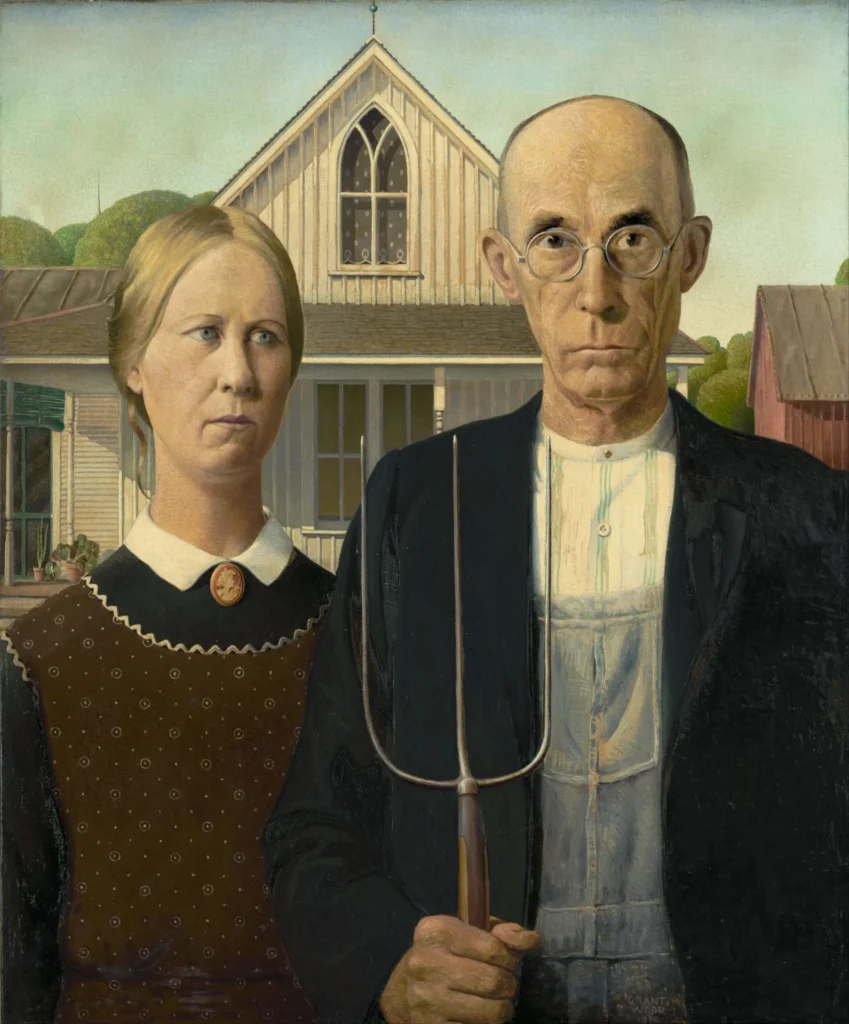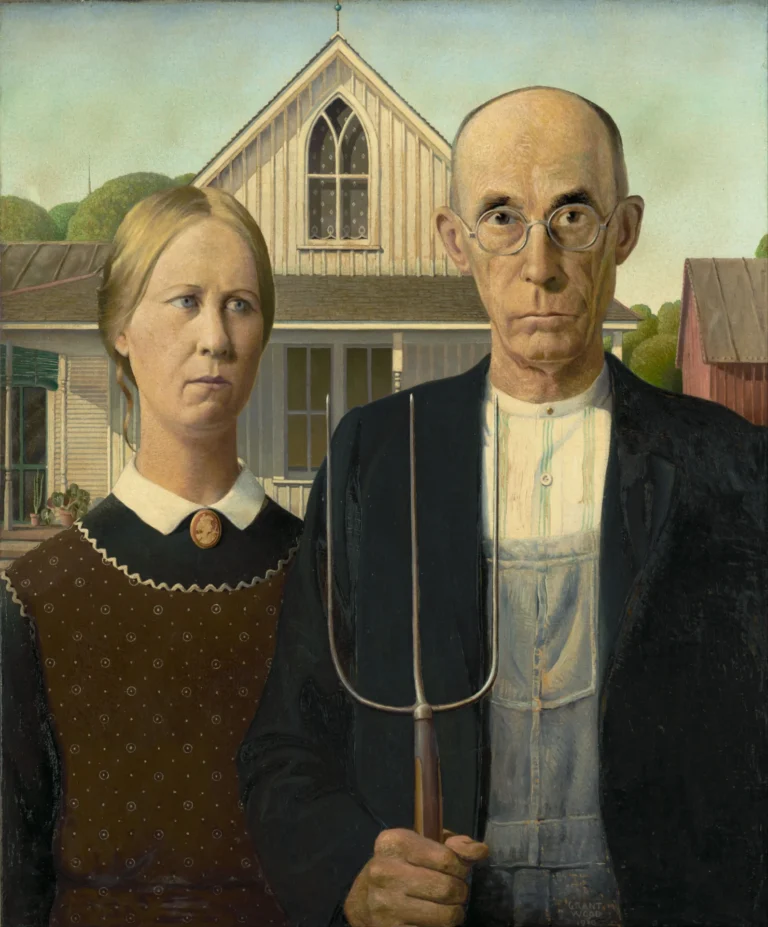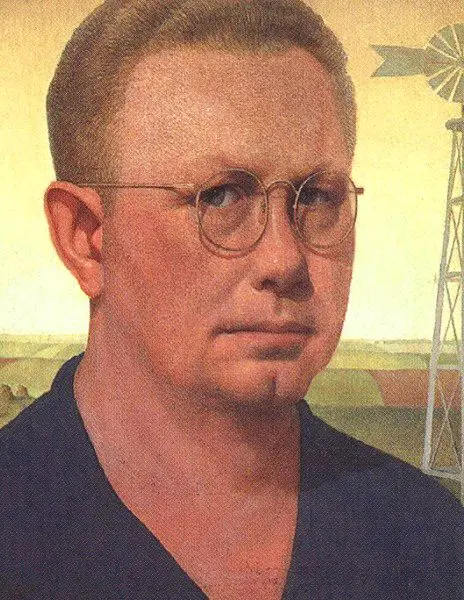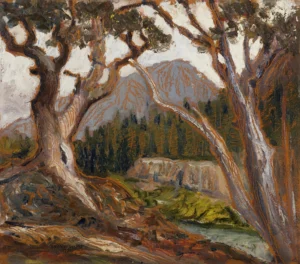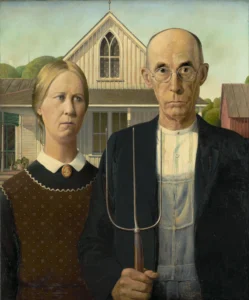American Gothic (1930)
Created in 1930 by Grant Wood, American Gothic depicts a stern man and woman standing in front of a Gothic-style house, representing the essence of American rural life. The painting draws inspiration from the Dibble House in Iowa, where Wood was struck by its architecture. Wood's models, his sister and dentist, contribute to the artwork's authenticity. As a key piece in the Regionalist movement, it balances themes of tradition and modernity, embodying both satire and celebration of Midwestern values, making it an enduring icon of American culture.
1930
About the Artwork
American Gothic emerged from Grant Wood's deep connection to rural America, inspired during a visit to Eldon, Iowa. Capturing his admiration for Carpenter Gothic architecture, Wood painted the iconic house that bordered the rural landscape. He sought to represent American values through the figures of his sister and dentist, who embody the sturdy moral fiber of Midwestern life. The painting reflects the harsh realities of the Great Depression yet maintains an underlying positivity in the portrayal of its subjects. While it invites various interpretations, Wood intended it to depict a reassuring representation of resilience and community at a time of uncertainty.
Did You Know
The figures depicted in American Gothic were modeled by Grant Wood’s sister, Nan Wood Graham, and his dentist, Dr. Byron McKeeby. Their portrayal reflects the authenticity and personal connection Wood had to the subjects he painted.
American Gothic is often interpreted as a critique of Midwestern conservatism; however, Grant Wood intended it to reflect the strong, reassuring spirit of rural American values during the trials of the Great Depression.
American Gothic has become a prominent symbol in American culture, frequently parodied in various forms of media, including television, advertisements, and art, testifying to its lasting impact and recognition.




